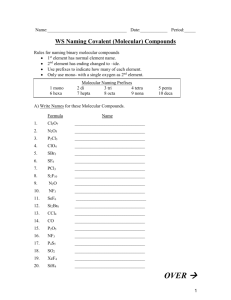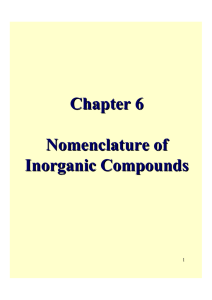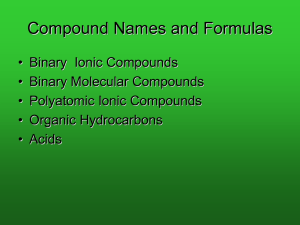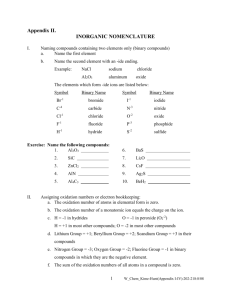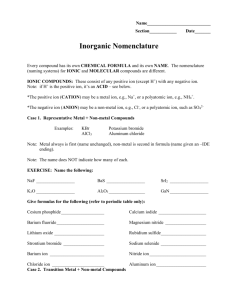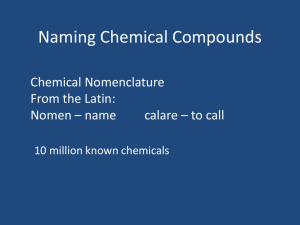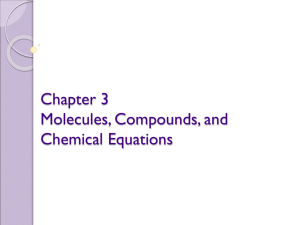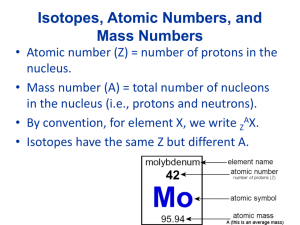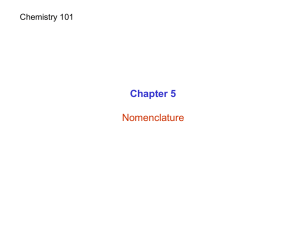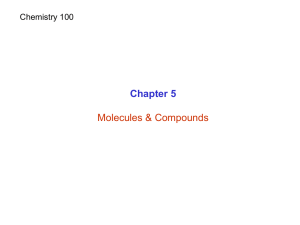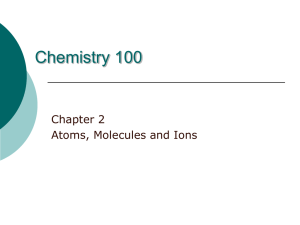2 - mvhs-fuhsd.org
advertisement
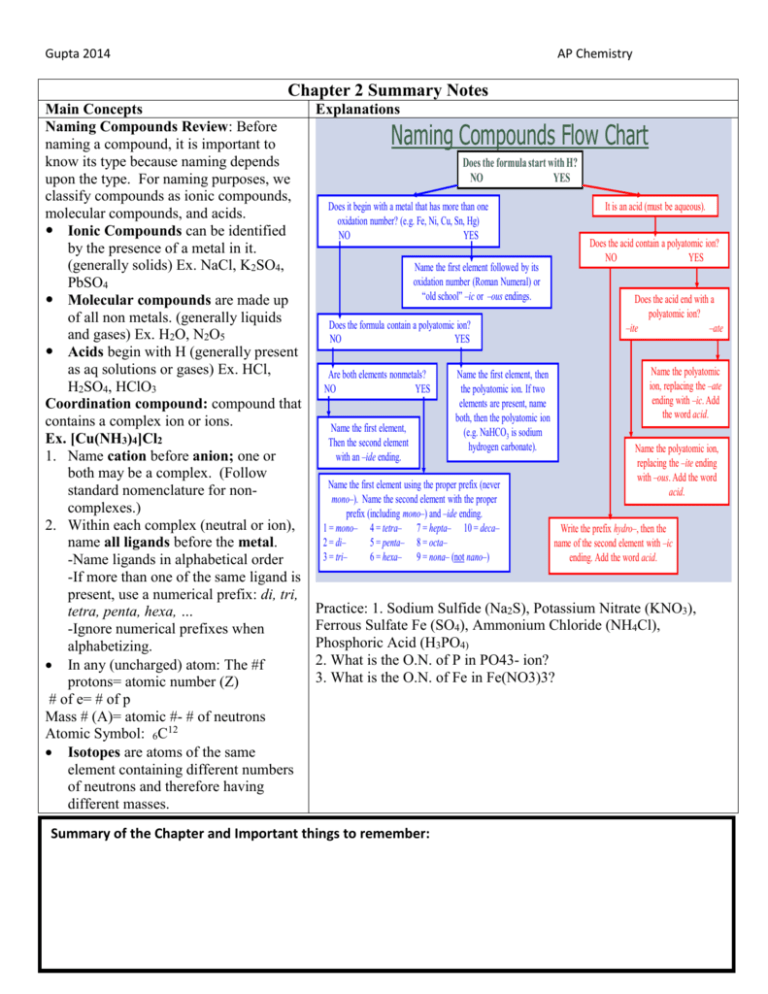
Gupta 2014 AP Chemistry Chapter 2 Summary Notes Main Concepts Naming Compounds Review: Before naming a compound, it is important to know its type because naming depends upon the type. For naming purposes, we classify compounds as ionic compounds, molecular compounds, and acids. Ionic Compounds can be identified by the presence of a metal in it. (generally solids) Ex. NaCl, K2SO4, PbSO4 Molecular compounds are made up of all non metals. (generally liquids and gases) Ex. H2O, N2O5 Acids begin with H (generally present as aq solutions or gases) Ex. HCl, H2SO4, HClO3 Coordination compound: compound that contains a complex ion or ions. Ex. [Cu(NH3)4]Cl2 1. Name cation before anion; one or both may be a complex. (Follow standard nomenclature for noncomplexes.) 2. Within each complex (neutral or ion), name all ligands before the metal. -Name ligands in alphabetical order -If more than one of the same ligand is present, use a numerical prefix: di, tri, tetra, penta, hexa, … -Ignore numerical prefixes when alphabetizing. In any (uncharged) atom: The #f protons= atomic number (Z) # of e= # of p Mass # (A)= atomic #- # of neutrons Atomic Symbol: 6C12 Isotopes are atoms of the same element containing different numbers of neutrons and therefore having different masses. Explanations Naming Compounds Flow Chart Does the formula start with H? NO YES Does it begin with a metal that has more than one oxidation number? (e.g. Fe, Ni, Cu, Sn, Hg) NO YES Name the first element followed by its oxidation number (Roman Numeral) or “old school” –ic or –ous endings. Does the formula contain a polyatomic ion? NO YES Are both elements nonmetals? NO YES Name the first element, Then the second element with an –ide ending. Name the first element, then the polyatomic ion. If two elements are present, name both, then the polyatomic ion (e.g. NaHCO3 is sodium hydrogen carbonate). Name the first element using the proper prefix (never mono–). Name the second element with the proper prefix (including mono–) and –ide ending. 1 = mono– 4 = tetra– 7 = hepta– 10 = deca– 2 = di– 5 = penta– 8 = octa– 3 = tri– 6 = hexa– 9 = nona– (not nano–) It is an acid (must be aqueous). Does the acid contain a polyatomic ion? NO YES Does the acid end with a polyatomic ion? –ite –ate Name the polyatomic ion, replacing the –ate ending with –ic. Add the word acid. Name the polyatomic ion, replacing the –ite ending with –ous. Add the word acid. Write the prefix hydro–, then the name of the second element with –ic ending. Add the word acid. Practice: 1. Sodium Sulfide (Na2S), Potassium Nitrate (KNO3), Ferrous Sulfate Fe (SO4), Ammonium Chloride (NH4Cl), Phosphoric Acid (H3PO4) 2. What is the O.N. of P in PO43- ion? 3. What is the O.N. of Fe in Fe(NO3)3? Summary of the Chapter and Important things to remember:
